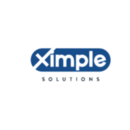Cloud-based enterprise resource planning
Contents |
[edit] What is cloud ERP?
Cloud ERP is a cloud-based enterprise resource planning (ERP) system rather than an on-premises network. ERP software coordinates and automates fundamental monetary and operational business functions and gives a single wellspring of data, including stock, request, and supply chain management, and helps with procurement, production, distribution, and satisfaction.
[edit] What Is Cloud ERP Software?
Since it's facilitated by the ERP merchant and offered as assistance to businesses, cloud ERP software can offer better functionality to on-premises systems without upfront charges.
In its report, IDC expressed that "interest for cloud-based ERP systems continues to develop due to their capacity to get to and examine enormous measures of data in close to continuous."
[edit] How Does Cloud ERP Work?
Cloud ERP systems work with a combination of innovations connected by fast internet networks. The cloud ERP is generally online and security refreshes are dealt with by the ERP supplier.
Generally, cloud ERPs are available to clients on mobile devices or desktop computers. They incorporate an extensive variety of business applications to keep businesses running proficiently with an emphasis on a positive client experience and profitable business results.
Cloud-based ERPs offer close to boundless capacity to scale and engage to get to any information in any place. Key elements incorporate the capacity to get to client information, deals accounts, monetary data, HR management devices, live operating metrics, and supply chain status.
You can pick between models with modules and settings optimized for your organisation.
[edit] Components of Cloud ERP Software
Accessible cloud ERP modules include:
- Financials and bookkeeping
- Human resources management (HCM) or potentially Human resource management software (HRMS)
- Client relationship management (CRM)
- Stock management
- Request management
- Procurement
- Supply chain management
- Project management
- Material prerequisites planning (MRP)
- Cloud ERP Concepts
Fundamental concepts related to cloud ERP include:
- Deployment strategy: ERP software can be conveyed on-premises/on confidential hosted servers or purchased in an "as a help" model. Cloud ERP functionality can typically be conveyed all the more rapidly, however, in the two cases, organisations need to carve out opportunities for planning, data migration, customisation and configuration, and staff preparation.
- Cloud-based ERP: Enterprise resource planning software that is hosted offsite, on the ERP merchant's servers, and offered as support through an internet browser.
- On-premises ERP: Enterprise resource planning software that is introduced locally, on an organisation's computers and servers, and overseen by interior or contracted IT staff. The software and its supporting infrastructure are made due, put away, and kept up with in-house.
- Hosted ERP: An organisation or a facilitating supplier deals with the deployment of Cloud ERP software as well as the related framework. Hosted deployment models are often used when businesses look to re-appropriate IT operations. While this arrangement gives some cloud benefits, it's anything but a valid "as a help" model.
[edit] Related articles on Designing Buildings
Featured articles and news
RTPI leader to become new CIOB Chief Executive Officer
Dr Victoria Hills MRTPI, FICE to take over after Caroline Gumble’s departure.
Social and affordable housing, a long term plan for delivery
The “Delivering a Decade of Renewal for Social and Affordable Housing” strategy sets out future path.
A change to adoptive architecture
Effects of global weather warming on architectural detailing, material choice and human interaction.
The proposed publicly owned and backed subsidiary of Homes England, to facilitate new homes.
How big is the problem and what can we do to mitigate the effects?
Overheating guidance and tools for building designers
A number of cool guides to help with the heat.
The UK's Modern Industrial Strategy: A 10 year plan
Previous consultation criticism, current key elements and general support with some persisting reservations.
Building Safety Regulator reforms
New roles, new staff and a new fast track service pave the way for a single construction regulator.
Architectural Technologist CPDs and Communications
CIAT CPD… and how you can do it!
Cooling centres and cool spaces
Managing extreme heat in cities by directing the public to places for heat stress relief and water sources.
Winter gardens: A brief history and warm variations
Extending the season with glass in different forms and terms.
Restoring Great Yarmouth's Winter Gardens
Transforming one of the least sustainable constructions imaginable.
Construction Skills Mission Board launch sector drive
Newly formed government and industry collaboration set strategy for recruiting an additional 100,000 construction workers a year.
New Architects Code comes into effect in September 2025
ARB Architects Code of Conduct and Practice available with ongoing consultation regarding guidance.
Welsh Skills Body (Medr) launches ambitious plan
The new skills body brings together funding and regulation of tertiary education and research for the devolved nation.
Paul Gandy FCIOB announced as next CIOB President
Former Tilbury Douglas CEO takes helm.
UK Infrastructure: A 10 Year Strategy. In brief with reactions
With the National Infrastructure and Service Transformation Authority (NISTA).























